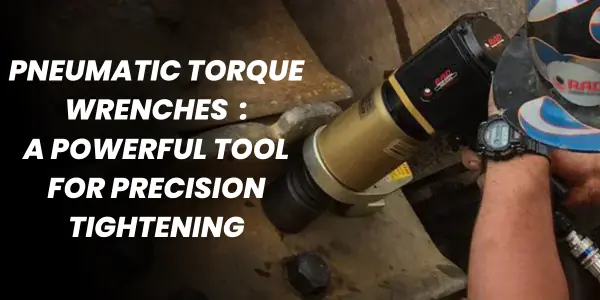Pneumatic torque wrenches are essential tools in industries where precise and efficient tightening of bolts is critical. These wrenches utilize compressed air as their power source, providing a reliable and adjustable means of applying torque to bolts.
How Pneumatic Torque Wrenches Work
A pneumatic torque wrench consists of a pneumatic motor, a gear reduction system, and a torque reaction mechanism. When compressed air is supplied to the motor, it rotates a gear train that drives a reaction arm. The reaction arm is connected to a torque sensor, which measures the force exerted on the bolt. Once the desired torque setting is reached, the wrench automatically shuts off, preventing over-tightening.
Key Advantages of Pneumatic Torque Wrenches
- High Power Output: Pneumatic torque wrenches can deliver significant torque, making them suitable for heavy-duty applications.
- Versatility: They can be used in various industries, including automotive, aerospace, manufacturing, and construction.
- Precision: With proper calibration, pneumatic torque wrenches can achieve high levels of accuracy in torque application.
- Efficiency: They are fast and efficient, reducing assembly time and improving productivity.
- Durability: Pneumatic wrenches are generally durable and reliable, with long service life.
Applications of Pneumatic Torque Wrenches
- Automotive Assembly: Tightening wheel nuts, engine bolts, and other critical components.
- Aerospace Manufacturing: Assembling aircraft structures and components.
- Industrial Machinery: Installing and maintaining machinery components.
- Construction: Securing structural components and equipment.
Choosing the Right Pneumatic Torque Wrench
When selecting a pneumatic torque wrench, consider the following factors:
- Torque Range: Choose a wrench with a torque range that suits your specific applications.
- Accuracy: Ensure the wrench has the required accuracy level for your tasks.
- Air Consumption: Consider the air consumption rate to determine if your air compressor can provide sufficient supply.
- Ergonomics: Choose a wrench with a comfortable grip and ergonomic design for operator comfort.
Safety Considerations
- Proper Training: Operators should be trained in the safe and proper use of pneumatic torque wrenches.
- Regular Maintenance: Regular maintenance, including lubrication and calibration, is essential for optimal performance and safety.
- Safety Equipment: Wear appropriate safety equipment, such as safety glasses and gloves, when using pneumatic torque wrenches.
Pneumatic torque wrenches are indispensable tools for industries that require precise and efficient bolt tightening. By understanding their operation, advantages, and applications, you can select the right wrench for your specific needs and ensure safe and reliable performance.


